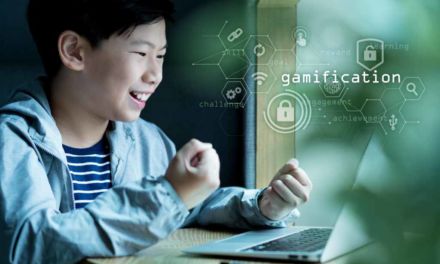The use of game mechanics in settings that are not intended for gaming is called gamification. It is done to improve the user experience. It is not a simple effort to create a learning environment that encourages creative thinking. Teachers often adhere to more conventional methods during language instruction, such as the chalk-and-talk method. Lessons conducted using pen and paper are less appealing to primary school children of the 21st century, who would rather participate in activities that are more like games. Because of this, the use of gamification in the classroom would immediately result in passion and interest, leading to the learners’ eagerness to study.
What is gamification?
The use of game-design components and game-play principles in settings unrelated to gaming is what is meant to be understood as “gamification.” For instance, the acquisition of virtual “points” or some other form of currency, as well as the completion of a series of tasks or activities to advance to the next level, are both elements that can be used in contexts other than gaming to provide a learning environment that is both enjoyable and stimulating.
Gamification theory in education
According to the educational principle of gamification, primary school children learn best when they are having fun with the material. Not only this, but they also learn best when they have objectives, milestones, and successes to work towards, all while doing so in a manner that the learner still views the activity as pleasant.
The Benefit Of Bringing Gamification Learning Into The Classroom
Because gamification seems to have such positive effects in educational settings, educators and educational institutions are making more efforts to use it in classrooms. Students have improved their ability to follow directions thanks to gamification, which encourages a more collaborative and teamwork-oriented approach to learning. Many teachers who have employed gaming in their classrooms have even characterised it as a “mask” that helps primary school children learn while allowing them to have fun. Students have also learned how to interact with one another and generate ideas on how to solve difficulties, thanks to the use of gamification in classrooms.
Gamification Connects People On An Emotional Level
Emotions have the potential to be a very effective instructional tool. They make the process of encoding information and retrieving it more effective, making the learning process much more effort-efficient. Using gamification helps primary school children feel more emotionally connected to the material being studied. It significantly impacts people’s levels of attention, which in turn makes them more open to learning.
Stories Are Easier For The Brain To Process Than Facts
The human brain is better able to digest tales than a list of facts in sequential order. Students may benefit tremendously from hearing new material presented as a tale or a story for this same reason. This tactic in gamification is very beneficial, especially in primary school, because video games often have narrative components that make them as engaging as they are.
Comparing and reflecting on the personalised performance
After each level, some video games provide the player with a personalised breakdown of their performance, outlining a vast amount of data such as their achievements, points, strengths, and weaknesses, as well as ways to reflect on their performance and compare it to that of other players. This reflection in a classroom setting will enable primary school children to understand their learning level and motivate them.
How To Choose The Right Game For Your Classroom?
A wide variety of games have made their way into classrooms in recent years, with their incorporation being determined by the various pedagogical techniques used by instructors and the specific preferences of pupils. Pick a game to play with your class of primary school children depending on the kind of knowledge you wish to impart to your pupils. Many reviews are available online that compare various games and what they bring to the table in a classroom. You are free to go through all of them and choose the one that best meets the needs of your pupils or criteria.
Conclusion
This cutting-edge method is producing positive results in every region of the world. It is becoming increasingly common for educators to experiment with different approaches to gamification and game-based learning. The hope is to assist primary school children in the development of improved learning skills that will serve them well in their academic and professional careers. Additionally, this can enhance students’ attitudes and make the process of education more enjoyable for them.
EDArcade is an exclusive gaming platform that helps primary school children develop knowledge from an early stage in their lives in a fun, informative and engaging way. Schools can integrate EDArcade into their system for extremely affordable prices. The platform is a product of EDClass, an online alternative provision, which helps educated students from remote locations.










